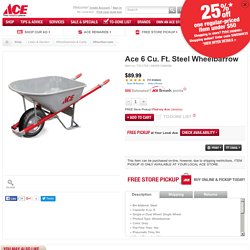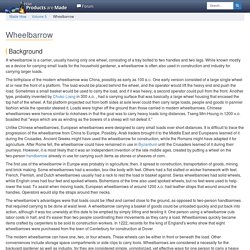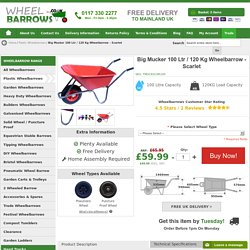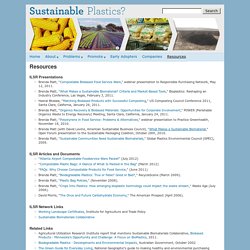

Source Wheel barrow Wb4200 on m.alibaba.com. Endurance Wheelbarrow. Heavy Duty Wheelbarrow. Buy Bullbarrow Picador Plastic Wheelbarrow - Purple from our Wheelbarrows & Trolleys range. High Performance Wheelbarrow Wheel Bearing With Great Low Prices ! - Buy Wheelbarrow Wheel Bearing,Wheelbarrow Wheel Bearing,Wheelbarrow Wheel Bearing Product on Alibaba.com. Wheelbarrow - Edwards Plant Hire & Tool Hire. Ace 6 Cu. Ft. Steel Wheelbarrow - Wheelbarrows. Bin Material: SteelCapacity: 6 cu. ft.Single or Dual Wheel: Single WheelProduct Type: WheelbarrowColor: GrayFlat Free Tires: YesPneumatic Tires: NoWheel Diameter: 16 in.Handle Type: HardwoodUnder Carriage Type: Yes1.5" red steel handles with comfort double injected two tone grips.

Contractor under carriage. Anti-tilt legs Full size 16" flat free tire. How wheelbarrow is made - making, used, parts, components, industry, Raw Materials. Background A wheelbarrow is a carrier, usually having only one wheel, consisting of a tray bolted to two handles and two legs.

While known mostly as a device for carrying small loads for the household gardener, a wheelbarrow is often also used in construction and industry for carrying larger loads. The birthplace of the modern wheelbarrow was China, possibly as early as 100 B.C. One early version consisted of a large single wheel at or near the front of a platform. The load would be placed behind the wheel, and the operator would lift the heavy end and push the load.
Unlike Chinese wheelbarrows, European wheelbarrows were designed to carry small loads over short distances. Galvanised Wheelbarrow - DIY & Tools. Wheel barrow in United Kingdom. Implement & Wheelbarrow Tyres. Where can i buy a wheelbarrow in leicester - Evi. Plastic Wheelbarrows. 100 Litre Scarlett Mucker Garden Wheelbarrow. The Scarlet Big Mucker with, LARGE, 100 litre Plastic pan The Scarlet Big Mucker with a 100 litre capacity, as a Garden Wheelbarrow, a general purpose wheelbarrow or DIY Wheelbarrow for all heavy jobs around the home.

The Scarlet Big Mucker Wheelbarrow is part of our Mucker range of plastic wheelbarrows and because it has a plastic tub it is very popular for equestrian use or use for other animal waste or bedding as the plastic tub on this wheelbarrow won’t react to the animal waste. This ideal stableyard wheelbarrow and is also used in many vetinary practices. Solid steel skids to protect the frame legs from wear. The wheel on the Scarlet Big Mucker Plastic Wheelbarrow is pneumatic and is manufactured specifically for heavy duty work. Designed to be stored outdoors Delivered in kit form for home assembly. The colour of the wheelbarrow pan may vary slightly from the image shown. Unfortunately this product is out of stock please see our 120 Litre Super Mucker.
Ntract Wheelbarrow 85L - Variety of Wheelbarrows Sizes Available Online. Haemmerlin Galvanised Wheelbarrow 120L - Variety of Wheelbarrows Sizes Availa... Sustainable Plastics? ILSR Presentations Brenda Platt, “Compostable Biobased Food Service Ware,” webinar presentation to Responsible Purchasing Network, May 12, 2011.Brenda Platt, "What Makes a Sustainable Biomaterial?

ILSR Articles and Documents ILSR Network Links Related Links Online Ordering of Bioproducts Conferences Industry News News Archive Industry Associations Industry Publications and Web Sites Experts in the Field. 8: Plastic Additives - Top 10 Eco-friendly Substitutes for Plastic. While some people are busy developing plastic substitutes, others are bent on making conventional thermoplastics biodegradable.

How? By throwing in additives called prodegradant concentrates (PDCs). PDCs are usually metal compounds, such as cobalt stearate or manganese stearate. They promote oxidation processes that break the plastic down into brittle, low-molecular-weight fragments. Microorganisms gobble up the fragments as they disintegrate, turning them into carbon dioxide, water and biomass, which reportedly contains no harmful residues. Search around for additive technologies and you'll come across the trade names TDPA (an acronym for Totally Degradable Plastic Additives) or MasterBatch Pellets (MBP). When added to polyethylene (the standard plastic bag material) at levels of 3 percent, PDCs can promote nearly complete degradation; 95 percent of the plastic is in bacteria-friendly fragments within four weeks [source: Nolan-ITU Pty]. Eco Friendly Construction Methods and Materials. By: Jennifer Gray - Updated: 20 Feb 2016| *Discuss There is an urgent need to address the great challenges of our times: climate change, resource depletion, pollution, and peak oil.

These issues are all accelerating rapidly, and all have strong links with the building industry. There is a growing consensus from scientists and the oil industry that we are going to reach peak oil in the next twenty years, and that we might have reached this point already. Global demand is soaring, whilst global production is declining, and oil is set to become increasingly expensive and scarce. Reducing Energy Consumption With the inevitability of declining fossil fuels, and the threat of global climate change, reducing our energy consumption is an essential survival strategy. Sustainable Building Solutions. Reverse engineering outline. Technical Report on Reverse Engineering of High Power Supply. How toaster is made - manufacture, making, history, used, parts, components, machine, History, Raw Materials. Background A toaster is a small appliance that uses heat to brown and harden bread.

History The practice of browning bread is an ancient one. Early civilizations placed bread over an open fire in order to keep the bread from growing mold. The Romans brought the idea back from Egypt in 500 B.C. and then took it to Great Britain when they invaded in A.D. 44. In the eighteenth century, a hinged fork was used to hold the bread and prevent it from falling into the fire.
Fire was the source of heat for toasting bread until 1905 when Albert Marsh, an engineer, created an alloy of nickel and chromium, called Nichrome. In 1905, Westinghouse introduced a toaster stove that featured a heating element on a raised base. At first, the electric toaster was primarily used in restaurants because the majority of homes had limited access to electrical power.